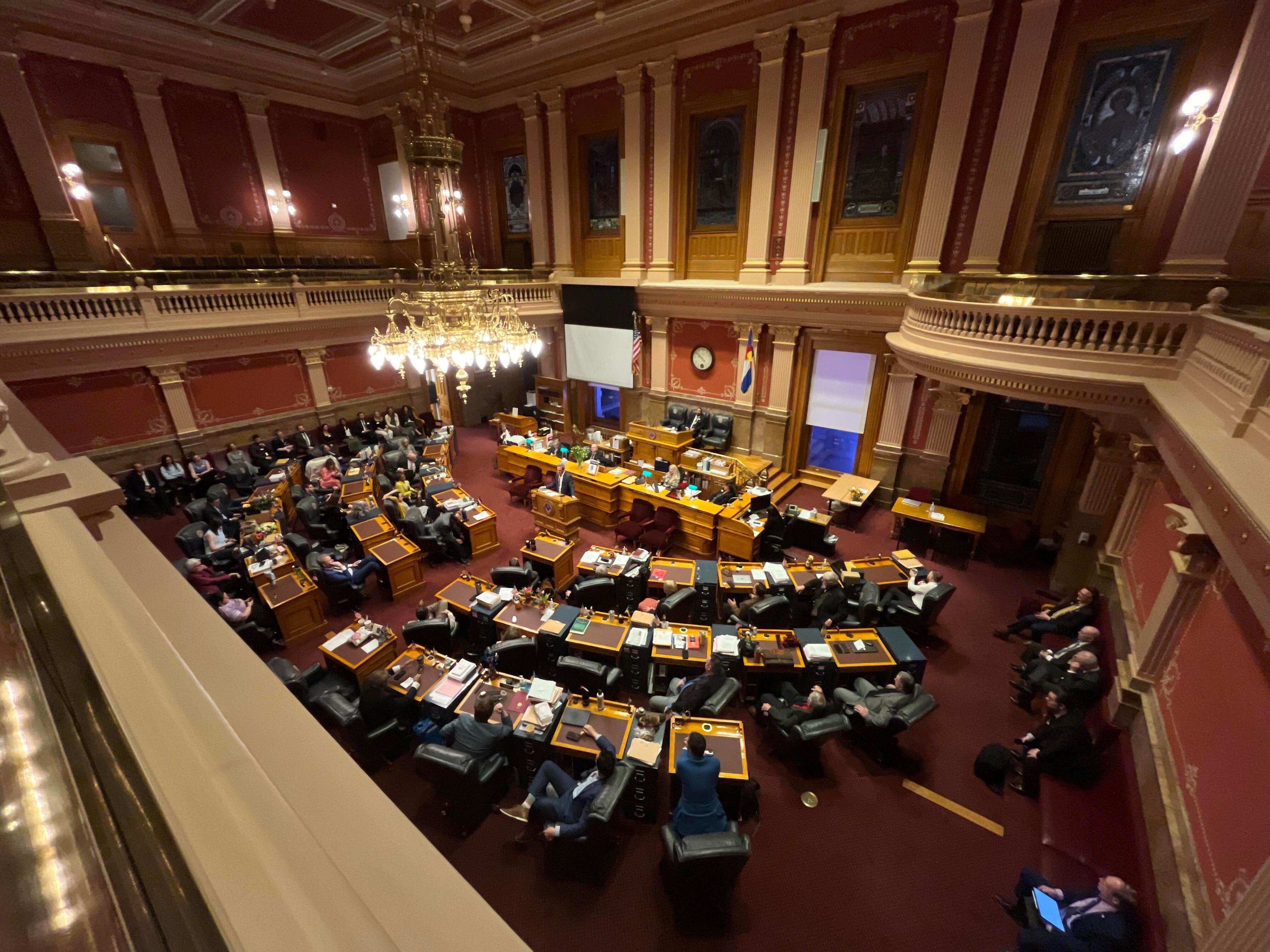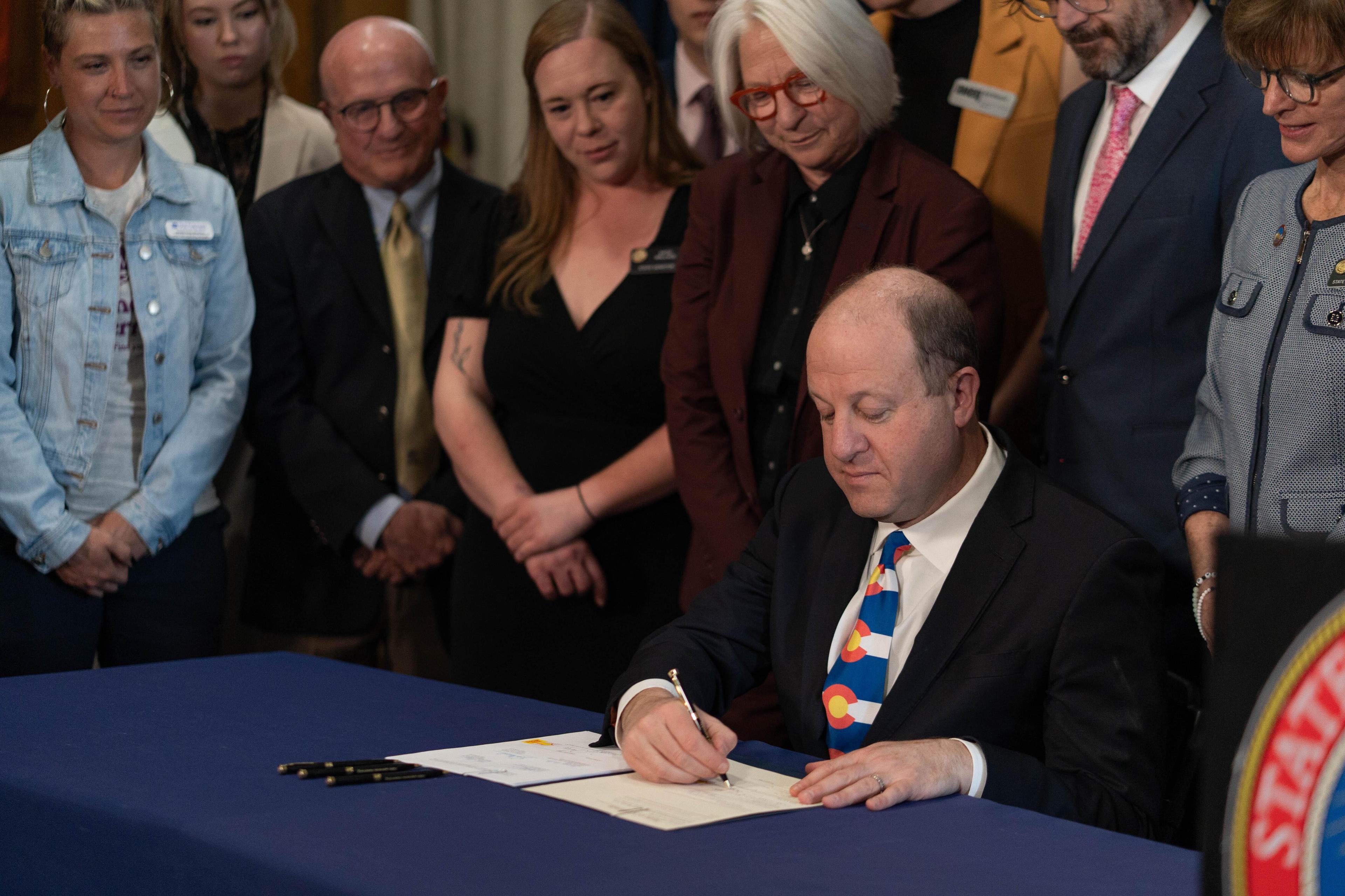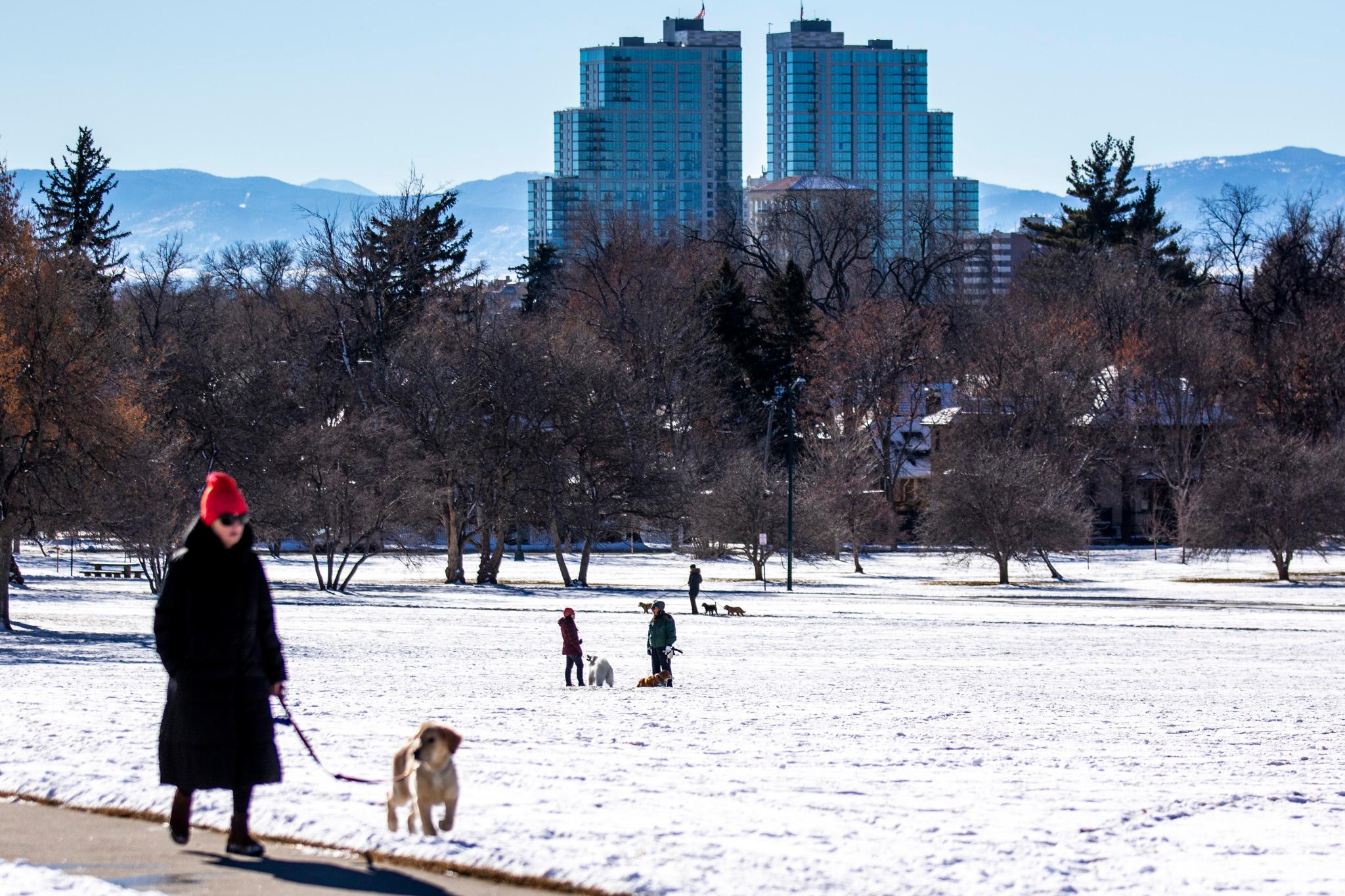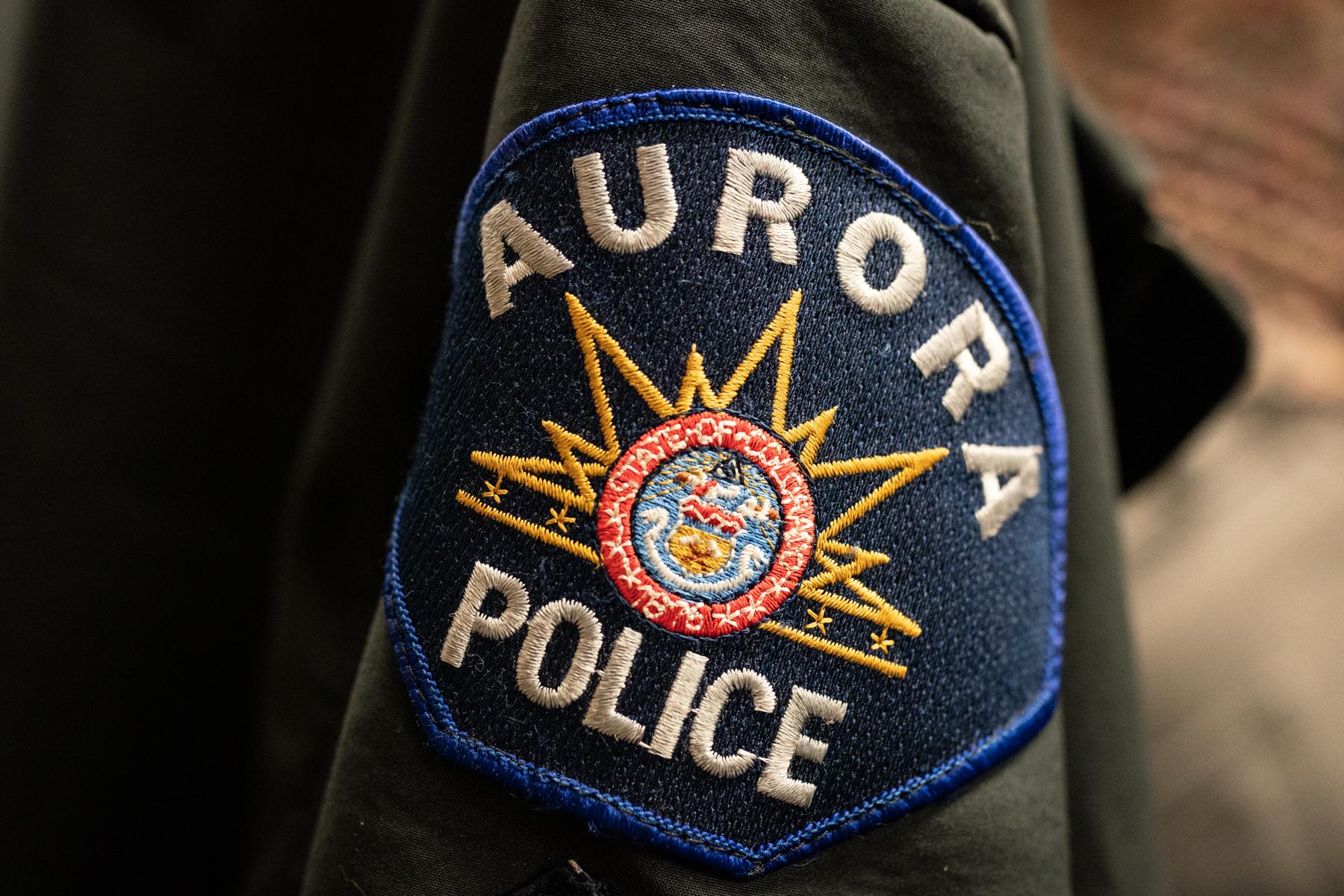In a rugged canyon in southern Wyoming, a helicopter drops nets over a pair of coyotes. They're bound, blindfolded and flown to a landing station. There, University of Wyoming researchers place them on a mat. The animals stay calm and still while technicians figure out their weight, age, sex and other measurements. Graduate student Katey Huggler fits the coyotes with tracking collars.
"What really is most important to us is that GPS data," says Huggler, who's the lead on this project. What that data has been showing is, boy, do coyotes roam. Huggler is amazed at one young female that wandered long distances.
"It was like 110 miles as the crow flies, turned around, came back three days later," she says. "[Coyotes] are moving fast, but they're also moving really far."
Huggler says all that roaming changes during the short window when mule deer fawns are born, showing that coyotes are indeed targeting them. Mule deer populations around the West are down — 31% since 1991 — and some people blame coyotes. It stands to reason that killing some coyotes could help improve mule deer numbers, but University of Wyoming wildlife professor Kevin Monteith points out if you wipe out a pack of coyotes, it leaves a hole in the habitat, and nature dislikes a vacuum.
The federal government kills thousands of coyotes every year to keep them from preying on livestock and big game. But some wildlife biologists say killing coyotes isn't actually the best way to control them.
"The next day you just have an exchange of animals that come right back in and fill that place," Monteith says.
In fact, some studies show that if you kill off a lot of coyotes, they breed even more.
"Oftentimes, coyote control programs have been implemented, and in some or many instances, the effects were negligible," Monteith says.
Yet these conclusions haven't affected the high number of coyotes killed by Wildlife Services, the little-known program run by the U.S. Department of Agriculture to conduct such lethal control. In 2018, the agency killed more than 68,000 coyotes in the U.S., 5,600 just in Wyoming. But some wildlife advocacy groups wonder why coyotes are being trapped, shot and poisoned when the science doesn't necessarily show it works.
"This is something we've been working on at a national scale, really trying to transform Wildlife Services," says Collette Adkins of the Center for Biological Diversity, a wildlife advocacy group that's filed numerous lawsuits to force Wildlife Services to include the most recent science on predator control in their plans.
"Like in Wyoming, which is relying on science primarily from the '70s, the '80s, maybe the early '90s, that just isn't OK," Adkins says. "When it's a couple decades old, they need to take another look."
And more and more judges agree: California, Arizona and Idaho all are now required to change their plans to include more nonlethal approaches, and Adkins hopes Wyoming will be next.
"In this last decade, we have seen this growing body of literature that points to the effectiveness of nonlethal methods. For example, using guard dogs or fencing or frightening devices."
But Rod Merrell with Wildlife Services in Wyoming says, "We've used noisemakers and sirens, and they work for a period of time, and then the coyotes realize they're not going to get hurt."
Merrell says, based on his 23 years in the field, killing the coyotes does still work best to stop them from preying on livestock and big game.
But the researchers in the canyon say they're interested in taking a new approach — studying coyotes' behavior when they're alive.
After the two coyotes are weighed and collared, it's time to release them into the wild. Researcher Tayler LaSharr is teaching a classmate how to do that.
"When I'm ready and you say you're ready to go you'll, like, take your hands back and push him. They run really fast. You ready?"
The two researchers remove the animal's restraints at the same moment and the coyote springs away from their hands. He looks back, confused at his freedom, and then he's gone.
9(MDEyMDcxNjYwMDEzNzc2MTQzNDNiY2I3ZA004))







